Solar-powered street lighting: types of autonomous lanterns and application options
The local area, paths, lawns, and gardens need good lighting.In order to see the yard and driveways in the evening, it is not necessary to create a miniature Las Vegas by connecting electric lamps.
You can organize soft street lighting using solar batteries - this is not difficult to do, and the benefits of such a solution are obvious. Lamps bring practical benefits, help save energy resources and improve the decorative appearance of the garden. Still in doubt?
We invite you to learn more about solar-powered lanterns. In the article we examined the design, operating principle, types, advantages and disadvantages of such lamps. In addition, we have prepared a review of the best models and options for their placement on a personal plot.
The content of the article:
Why pay money for street lighting?
In recent years, you can see street lamps not only near private houses, shops, cafes, offices, but also in dachas, where the owners appear from time to time and for a short time.
It would seem, why invest money in lighting where the owners visit only occasionally? But it makes sense.
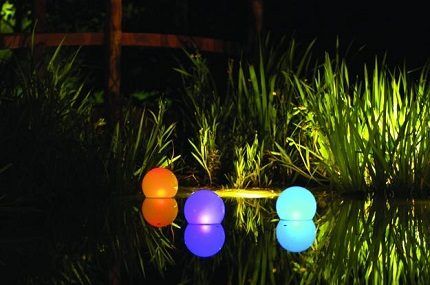
A dacha is a place where people come to relax, enjoy peace and the company of family and friends. It should be cozy and beautiful here.
In addition, lighting in the country is a definite signal for intruders. It indicates that the house is not abandoned and the owners may be in it.
Street lighting is vital. In any case, it will have to be equipped. The only question is the amount that will have to be invested for its organization and operation.
The most profitable option is to buy solar-powered street lights.They do not increase your energy bills and do not require any special maintenance.
Debunking myths about solar lanterns
Opponents of solar-powered lamps for street lighting argue that such devices cannot compete with electric lamps. But does it make sense to compare them at all? They are originally designed for different purposes.

Purpose electric lamps – provide bright contrasting light, thanks to which you can see all the details. But solar-powered lanterns have a completely different function - to illuminate the area so that you can navigate normally in the evening and at night.
They are not intended to illuminate areas where active activities requiring attention and precision are planned.
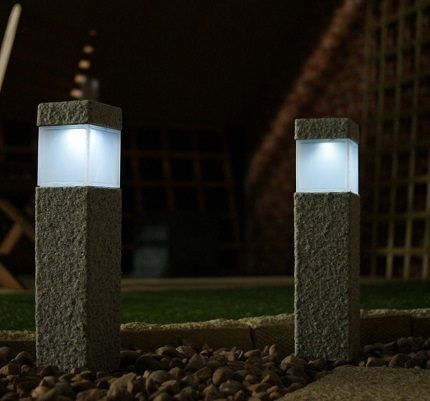
Flashlights based on photocells cannot compete with electrical devices in terms of brightness, so it makes sense to organize combined lighting.
For example, an electric lamp is appropriate above the porch of a house. To improve ease of use and save energy, it can be supplemented motion sensor or photosensitive relay. And paths, lawns, and gardens can be illuminated with solar-powered lamps.
When arranging a combined system, you need to remember that the electric light blocks the solar lights.
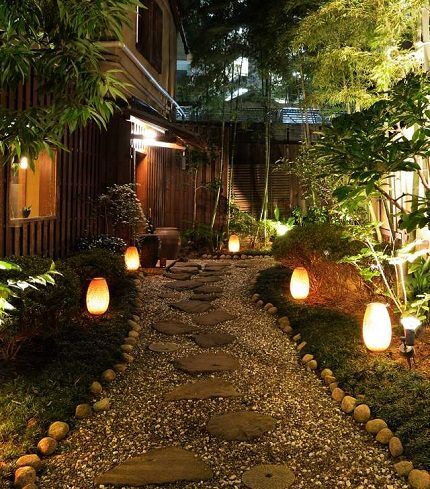
The intensity and duration of operation of autonomous solar street lights largely depends on the weather.
If it is cloudy during the day, you cannot expect good and long-lasting light in the evening, because... To fully charge the battery, it takes 8-10 hours and good sunlight. This is the main disadvantage of photocell street lights.
5 reasons to choose photocell lighting
Lamps based on photocells have several advantages that perfectly compensate for the disadvantages:
- Autonomy. The lights do not require electricity to operate, so there is no need to lay wires or connect devices to the network. This is a significant saving of effort and money.
- Energy independence. You can install several dozen lamps, and your electricity bills will not increase.
- Full automation. Devices are charged, turned on and off without user intervention.
- Easy to install. Installing the lamps will require a minimum of time and effort. You do not need to have any special knowledge to install them and ensure normal operation. If desired, the devices can be easily moved to another place.
- Unpretentiousness. The lamps are easy to use and do not require complex care and maintenance.
The cost of high-quality electric street lights and garden lights powered by solar batteries is not much different. The difference in costs becomes obvious during operation.
A solar lantern is a one-time investment, and the operation of even the most economical electrical appliances involves ongoing energy costs.
Features of the design and operation of lamps
There are many types of solar-powered lighting devices, but their design and operating principle of light panels approximately the same. Solar energy is accumulated using special batteries and accumulators.
When power is applied to a semiconductor LED, it emits visible light. The LED control system consists of a light sensor and a microcircuit.
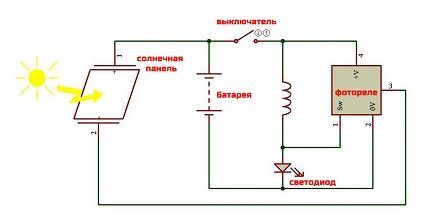
The intensity of the lantern's glow depends on the voltage. When the battery is low, the control system turns off the light. It is turned on using a special photocell, the function of which is to convert solar energy into electrical energy.
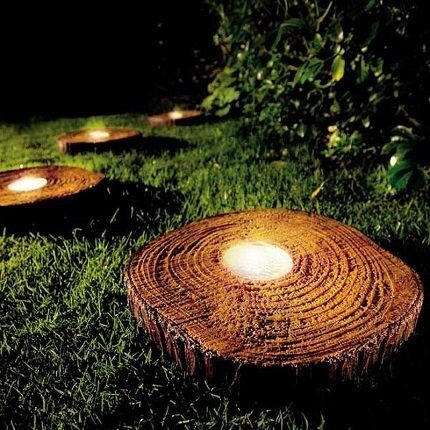
When choosing lamps, you should take into account not only the technical characteristics of the devices themselves, but also the climatic features of the area. Batteries cannot withstand frost, so in regions where severe winters are possible, the lanterns are dismantled in late autumn and returned to their place only in the spring.
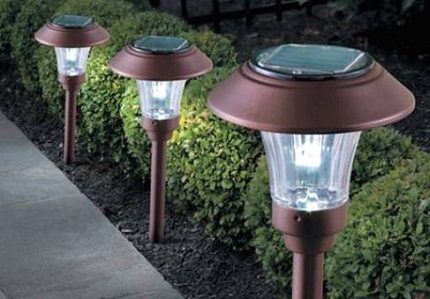
Most models have photocells made from silicon. This is an important nuance, because devices based on monocrystalline silicon are more reliable and durable than models with polycrystalline photocells.
They also pay attention to the type and quality of glass. The best choice is flashlights with polycrystalline photocells and tempered glass.
Varieties of street lamp models
The most popular types of lamps based on photocells:
- wall;
- park;
- lawn;
- decorative.
Street lamps can be used in any area of the local area. In fact, the scope of their application is limited only by the owner’s plans for landscape decoration.
The main thing is that the photocells receive the right amount of sunlight, and any model will be useful and functional.
Autonomous lights can be placed wherever the owner deems appropriate.If the solar panels are exposed to sunlight for 10 hours a day, high-quality and uninterrupted operation of the lamps is ensured.
TOP 7 best lamps based on photocells
Miracles do not happen, so it is unlikely that you can buy a good lamp for pennies. If your plans include proper illumination of the area, and not just decorating it with original glowing figures, you should pay attention to high-quality products.

Models that have proven themselves well:
- Star Alliance YH0607A-PIR. The body of the model is sealed, there is a motion sensor, and a system for adjusting lighting modes.
- MJJC-SLYF170. The low power model is designed to be installed low above the ground. A good option for illuminating steps and the lower part of the walls of a house.
- MK02500. The lamp is designed for wall mounting; the body is impenetrable to water droplets and dust.
- ZY-TYN-T10W. The model is expensive, but the costs are more than compensated. The advantages of the lamp are power, the presence of a motion sensor, reliability and durability.
- RDF YD04. The device has a unique design and high quality workmanship, but its scope of application is limited due to the low brightness of the light.
- Sunlight M3. These are low-power models that place several pieces at once. Advantages: stylish design, relatively low cost.
- Solar Lamp. The light intensity depends on the motion sensor. When it is triggered, the light comes on at full power. A good solution for lighting the front door.
These are not all high-quality street lamps based on photocells. There are other models worthy of attention. Additional information about the types and features of choosing solar lanterns is presented in this article.
Many users buy high-quality devices through the Aliexpress website. When choosing models in online catalogs, you should be careful not to run into low-quality fakes.
Conclusions and useful video on the topic
Autonomous solar-powered lanterns are still not widespread, so choosing them can be difficult. We offer a selection of videos that will simplify the task.
Installation of solar-powered lighting devices:
Diagram of the device and repair of a lamp using photocells:
The best lamp models on Aliexpress:
Video review of the lamp from a real user:
Street lamps using photocells are well protected from moisture, autonomous, easy to use and maintain. If necessary, they can be easily removed while mowing the lawn or trimming trees. The rest of the time they will delight their owners with soft light and a pleasant view.
The approximate service life of such a practical landscape decoration is 5-10 years. This is a good investment in landscaping.
Do you have anything to add, or do you have any questions about organizing solar-powered street lighting? You can leave comments on the publication, participate in discussions and share your own experience of using such lamps. The contact form is located in the lower block.




I've been looking at lamps like these for a while now. I want to try to decorate the area at the dacha with them: to highlight paths, flower beds, etc. But there are always a few questions that confuse me:
1.Firstly, are there any options with low temperature resistance? For example, I spend a lot of time at the dacha in winter, and I want everything to glow all year round. Maybe you can install one battery for all of them and put it in a warm garage, and then power all the lights from it... Or is the problem not in the battery, but in the panels themselves? Then this is not an option for our latitudes.
2. Secondly, I can’t fully understand whether this is relevant at all, if the house is located near St. Petersburg and there are a couple of sunny days there in the summer, and even less in the winter... For charging, do you need direct sunlight?
Direct rays are completely optional. Even on a cloudy day, active radiation is enough to charge the built-in battery.
But I would not recommend such lighting to you in St. Petersburg. They will not have time to charge normally. After a sunny day they will work for 3-4 hours, after a cloudy day 1-2 hours. Think about whether two hours of backlighting is enough for you in the dark?
Well, who said that the weather in St. Petersburg is so bad? How do people even survive there? And the network is still Foggy Albion - this is England which. There, fogs and cloudy weather are even worse, but believe it or not: they also use not only similar lamps, but even full-fledged solar panels.
Yes, the performance of the lamps will not be so high if the weather is not clear, but even on a cloudy day, the light penetrates the clouds and the photocells of the batteries catch it. Thus, productivity reaches 30-40% of maximum. This means that the lamps will work at night not for 1-2 hours, but 2-3 times longer.And no one forbids using ordinary lighting as the main one if the lighting from solar-powered lamps is not enough.
In addition, you can assemble such a lamp yourself. Here's a diagram if anyone is interested.
Indeed, it is pointless to compare electrical devices and solar devices. I installed solar powered lights in my yard. It is very economical and easy to install. Over the entire period of use, I tried many different types and realized that I need to choose flashlights only with polycrystalline photocells, then there will be no problem with their frequent replacement. There are a lot of models, but you shouldn’t skimp on the choice.